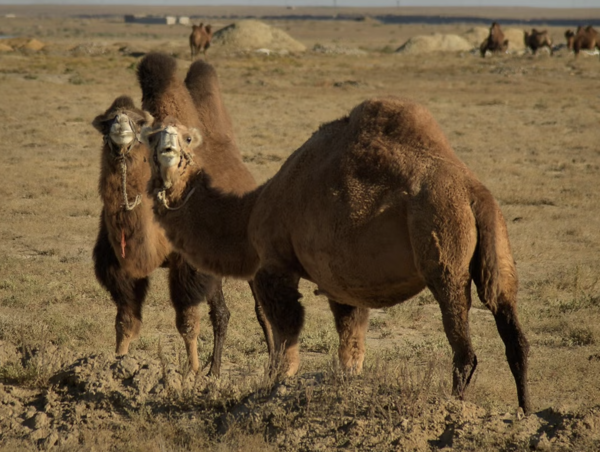Camels, known for their unique ability to survive in some of the harshest environments on Earth, are often recognized by the humps on their backs. However, not all camels have the same number of humps—some have one, while others have two. This fascinating characteristic raises the question: Why do camels have 1 or 2 humps? In this article, we will explore the evolutionary, physiological, and environmental reasons behind the differences in hump number, as well as the vital functions that these humps serve.

Camels are divided into two main species: the dromedary camel (Camelus dromedarius), which has one hump, and the Bactrian camel (Camelus bactrianus), which has two. These two species are adapted to different environments and have evolved unique physical features that enable them to survive in extreme conditions.
The dromedary camel, also known as the Arabian camel, is the most common species, particularly in the Middle East, North Africa, and parts of Asia. These camels are well-suited to hot, dry desert climates.
Adaptation for Heat Regulation: The one hump of the dromedary camel serves as a fat storage that helps the animal survive without food for extended periods. Unlike many mammals that need constant access to food, dromedary camels can rely on the fat in their hump to maintain energy levels in harsh desert conditions.
Hydration Efficiency: Dromedary camels can also store significant amounts of water in their bodies, and their hump helps with thermoregulation, minimizing water loss and preventing overheating. When food is scarce, the camel's body metabolizes the fat in the hump, converting it into water and energy.
The Bactrian camel, native to the cold, arid regions of Central Asia, has two humps. This species has evolved to thrive in environments that experience both freezing temperatures and scarce vegetation.
Fat Storage and Thermal Insulation: Each of the two humps serves as a fat reservoir, crucial for survival in these harsh conditions. The fat stored in the humps provides energy during the long, cold winters when food is limited.
Adaptation to Extreme Cold: In addition to fat storage, the Bactrian camel's two humps may also help provide a greater amount of insulation, helping to keep them warm in freezing climates. The structure of the two humps is thought to provide more surface area for fat storage, which enhances the camel's ability to survive during periods when food and water are sparse.
The primary function of camel humps, regardless of the number, is fat storage. The hump is not filled with water, as many people believe, but is a specialized adaptation that helps camels conserve energy and maintain hydration.
Fat is a high-energy nutrient, and camels store it in their humps to sustain them during long treks in desert and semi-desert environments. When a camel is not able to find food, it can metabolize the fat in its hump into water and energy. This allows the camel to survive for weeks without eating, making it one of the best animals for long-distance travel across arid landscapes.
The hump also plays a role in the camel's ability to regulate body temperature. In desert environments, the sun’s heat can be intense, and camels must find ways to minimize heat absorption. The fat in their hump acts as an insulating layer, helping to maintain internal body temperature and prevent overheating. This is especially important since camels often experience extreme heat during the day and freezing temperatures at night.
Though camels are not able to store water directly in their humps, their ability to conserve water is another key survival trait. The fat in the hump is metabolized slowly, and as the camel metabolizes the fat, it also releases water in the process. This water is then used to hydrate the camel, which is why camels can go for long periods without drinking, especially in environments where water sources are scarce.
The existence of 1 or 2 humps in camels is the result of millions of years of evolution, where different species adapted to their specific environments.
Dromedary Camels evolved to meet the demands of hot, desert climates with long, dry periods, leading to the development of a single, large hump for fat storage.
Bactrian Camels, on the other hand, adapted to survive in cold, mountainous regions where food was hard to come by, which is why they developed two humps to provide more fat storage.
Over time, these distinct characteristics allowed both species to become highly specialized for their respective environments.
| Feature | Dromedary Camel (Camelus dromedarius) | Bactrian Camel (Camelus bactrianus) |
|---|---|---|
| Number of Humps | 1 | 2 |
| Native Habitat | Hot, dry deserts (Middle East, North Africa, parts of Asia) | Cold, arid regions (Central Asia, Mongolia, China) |
| Hump Function | Fat storage, thermoregulation, hydration | Fat storage, thermal insulation, energy reserves |
| Environmental Adaptation | Adapted to extreme heat and dehydration | Adapted to extreme cold and scarcity of food |
| Survival Mechanism | Metabolizes fat into energy and water in desert conditions | Uses stored fat for energy during harsh winters |
| Physical Appearance | Slimmer body, long legs, more heat-efficient | Sturdier body, shorter legs, adapted to cold environments |
This table compares the key features of dromedary and Bactrian camels, highlighting how their humps serve essential survival functions in their respective environments.
The number of humps a camel has—whether it’s one or two—serves an important function in its survival. These humps are not simply a curious physical trait, but highly efficient adaptations that enable camels to thrive in extreme environments where food and water are scarce. While dromedary camels have one hump adapted for hot deserts, Bactrian camels have two humps that allow them to survive in cold, arid regions. Understanding these differences provides insight into the remarkable evolutionary journey of these iconic animals.
animal tags: Camelidae
We created this article in conjunction with AI technology, then made sure it was fact-checked and edited by a Animals Top editor.